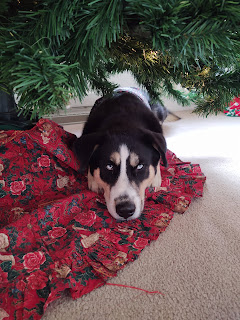Creating a Calm Puppy
Here is my basic relaxation protocol to get you started along the path to creating a calm environment for you and your young puppy. This can be done any time of day and tweaked to something that is more comfortable to you and your pup. The key is to move together from a more energized state into a relaxed state. We will practice this in class each week. But I urge you to make this part of your daily routine. You'll thank me later.
Step 1: Prep Supplies Needed
Set up for relaxation success before you enjoy your high stimulation activity. Prepare a mat or blanket, treats, chew toys, music, anything you will use in your relaxation setting before you engage in your high energy activity. This will help you transition more effectively from your top energizing state to your more relaxed state your aiming for. For me, that involves having my pup's blanket mat, some high value but low movement rewards (this can be a few treats, a bone to chew, a licky mat or other food toy, etc) and whatever supplies I need for myself (music, puzzle or game to hold my focus, and a water bottle.)
Step 2: Have Fun Together
Have some fun together! You want to teach your pup how to transition from go-go-go mode to a be still mode so you have to GO get some exercise before you become calm. For me this is best done after some GO activity already in my day, such as going out for a potty break with some sniffing (de-stressing for your dog) and practicing some easy skills. I want my dogs to enjoy going inside so we typically end outdoor sessions with a couple of treats near the outside door for simple things like sit, back, down or sometimes a quick name game with tossed treats. Remember FUN!
Step 3: Take a YOU time out.
This can be a few seconds or minutes based on your needs, but don't take forever or your dog won't pair the next step with the previous step. The basic idea is disengage from your dog to accomplish something...take my shoes and coat off and put them away, use the bathroom or blow my noise, whatever I need to do when I come inside.
Step 4: Refocus your puppy on you.
Re-engage with your dog with a simple directional cue; send to blanket/mat, let's go this way, follow me, etc. If you haven't trained any directional cues, start with easy sit, down, basic cues. Keep it low key and calming.
Step 5: Be role model of calmness
Join your puppy in the area you will be doing calm activities in. When you and your dog are both in position, slowly remove any gear or clothing your dog was wearing in your go session beginning from the outer layers working in; leash, harness, bandana, collar (if your dog enjoys having the collar off!) Do this very slowly with love and petting along the way. Make sure your getting your pups favorite spots! A butt scratch, belly rub, etc. This is a great time to desensitize to grooming tools such as a brush, nail file, towel drying if pup is wet, etc. But go slow using the tool for only seconds if it's new to your pup and slowly build up time using that tool over the next few weeks. I like to switch up my grooming tools so pup doesn't always need the grooming to relax. I typically do nails once a week, towel dry as needed, brush often or simply spend a few extra minutes rubbing or petting my dog.
Step 6: Connect & Disconnect
Start switching back and forth from engaging with your dog to ignoring your dog doing your own relaxation. At first you flip back and forth fairly quickly, spending more time engaging your dog and less time on your activity. But as you progress slowly switch this the other way, less engagement with your dog and more time with your activity until you reach the end goal of both being relaxed.
Tips:
You don't have to do this whole process EVERY time you take a potty break! But do try to do it at least once a day. If you practice every day, your dog will start to generalize the activity making it take less time to relax.
If at first you don't succeed, try, try again! If your dog isn't cooperating, chances are they have a need you haven't met yet. This could be food, water, exercise, or pretty much anything. So if it's not working, walk away take care of needs and try again later or tomorrow.
Be flexible! Change this basic protocol to fit you and your dog. You might be working with multiple dogs, which makes this more challenging. You might find mornings, afternoons or evenings work better for your team. Try different things until you figure out what works.
Enjoy a more peaceful and calm environment and mental state with your dog!



_20250507_102709_0005.png)


No comments:
Post a Comment